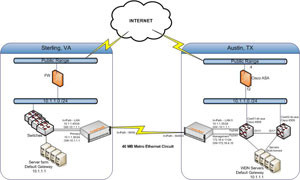Among the numerous emerging technologies in the world today, the cloud has proven to be a vital component in the IT systems of most firms.
Network performance has become an essential concern with the emerging use of the cloud in hosting applications and data.
The first is understanding the cloud instance types that should be implemented to get closer to this optimization goal.
This is very important because the type of instance you choose for your network will determine the overall performance and the cost incurred in the process.
This article will look at ways of getting the best out of the network while using the correct Cloud instance types, especially those found in the Google Cloud Platform (GCP).
Understanding GCP Instance Types
The Google Cloud Platform offers many different instance types to fulfill various performance and workload needs.
These are widely known as GCP instance types, and they can also differ in CPU, memory, storage, and networking.
Choosing the appropriate instance type is significant for the network because it helps achieve the best performance from your applications.
General-Purpose Instances
Multi-purpose instances allow for productivity across multiple business processes. They are intended to deliver computing, memory, and networking capacity, enabling them to be suitable for many applications.
As for network performance, it may be helpful to start with these instances, although they are suitable primarily for up to mid-tier workloads that do not require high-performance levels.
Compute-Optimized Instances
This class of instances is used for CPU-intensive operations, specifically compute-intensive operations. These instances offer high-performance processors suitable for applications that demand many CPU cycles.
If your network operations include data-intensive applications like data processing, machine learning, or high-performance computing, compute-optimized instances can significantly benefit you.
Memory-Optimized Instances
Memory-optimized instances are optimized for memory-intensive workloads. These instances provide optimal amounts of RAM, which can be of great value for applications requiring sizeable memory capacity.
Regarding network performance, memory-optimized instances are valuable for applications that require working with extensive datasets or using in-memory databases.
Networking Performance and Instance Types
Key factors that determine network performance are bandwidth, latency, and throughput. These factors are affected by the type of instance chosen; therefore, the appropriate type must be chosen to fit the task’s requirements.
Bandwidth
Bandwidth literally means the capacity of the connection and data that can be transmitted over the network in a given period of time.
Larger bandwidth means an increase in data carrying capacity needed in applications that demand high-speed data transfer between instances or external systems.
Some of the GCP instance types provide premium networking that can support higher bandwidth and is recommendable for applications that require a lot of networking.
Latency
Latency, on the other hand, is the duration taken for information to pass through a specific network. They also explained that the precise demand for low latency consists of the ability to perform tasks that involve real-time data transmission, including online gaming, video conferencing, or even financial trading platforms.
Such instance types with networking optimization can be used to minimize latency,, thus being ideal for sensitive applications.
Throughput
Throughput is the data that can be moved from one point to another in a system at any time over a particular period.
High throughput is a characteristic useful in many applications, especially those dealing with large sets of data at a time, for example, data mining or big data applications.
It also provides instance types with high network performance for high throughput applications to support and improve data processing.
How to Choose the Instance Type
When choosing an instance type that best suits the need for optimized network performance, one must clearly understand the application being run. Here are some steps to guide you in making the right choice:
- Assess Your Workload: Consider the amount of computation, memory demand, and the extent of data communication your application requires. This will assist you in evaluating the needs of your application and which instance type is most appropriate.
- Benchmark Performance: Use performance benchmarks to find out how your instance type does when put through your usage pattern. This will result in the generation of a detailed report on the performance characteristics of each instance type, thus assisting you in choosing one.
- Consider Cost-Effectiveness: However, it is imperative to look at performance and the cost associated with the chosen item in equal measure. As a measure of optimization, it is advisable to analyze the cost-performance ratio of various instances to understand how optimal their usage is.
- Utilize GCP Tools: Google Cloud Platform provides various options and guides for selecting the best instance type for you. The GCP instance types comparison tool is useful when selecting an instance type because it gives details on the functionality and performance of each type.
Conclusion
To achieve optimum results when hosting a network in the cloud, several factors, such as the instances to use, must be considered. Knowing the variations in GCP instance types and their effects on the network, one can make decisions that promote the application’s best results.
Whether you require a general purpose, compute-optimized, or memory-optimized instance, choosing between the different types can greatly enhance the efficacy of your network and guarantee that your applications are unhampered.
Using GCP tools, such as a GCP instance types comparison tool, can also help you reach the right decision based on your needs.









